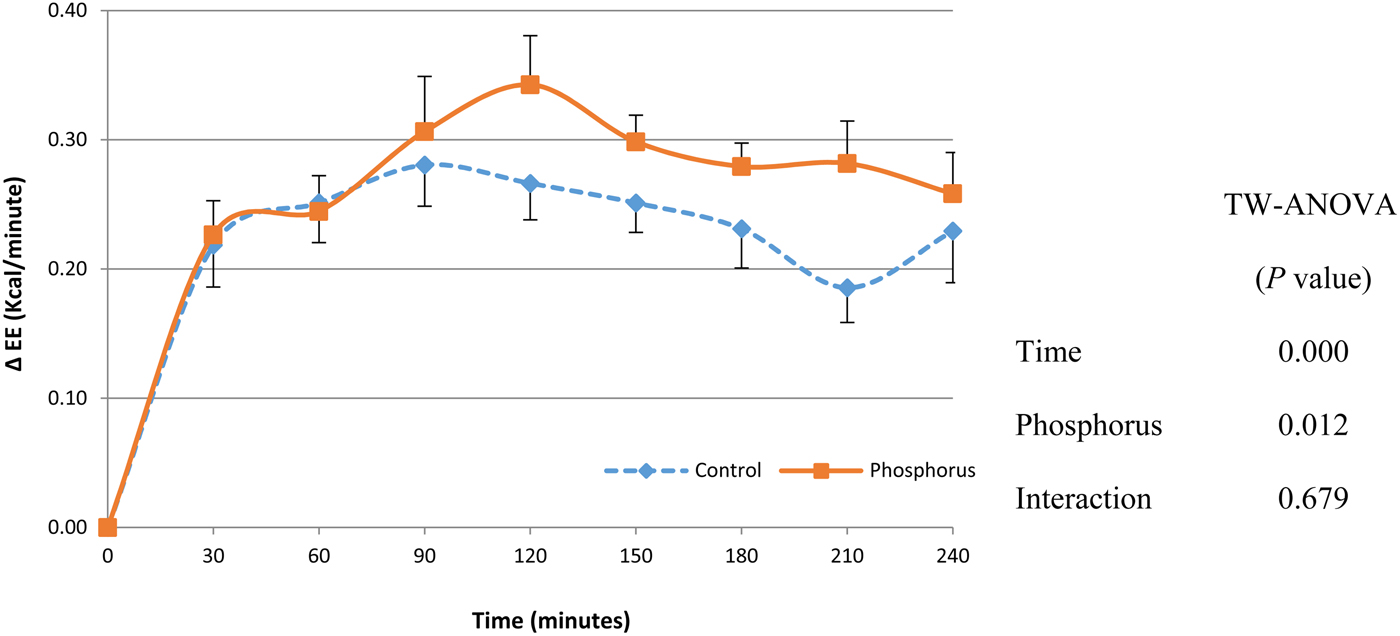Diet induced thermogenesis (DIT) of proteins is known to be higher than that of carbohydrates and fats (Reference Flatt and Bray1). Proteins contain high quantity of phosphorus that is required for energy production in the form ATP, which is a major contributor to DIT. However, it is not clear whether DIT of proteins is affected by their content of phosphorus. Thus, a study was conducted to explore the impact of phosphorus on DIT of protein using a low phosphorus containing protein, egg white.
A crossover design study (Approved by AUB IRB) was performed where nine healthy lean male subjects undertook 2 experimental sessions separated by a minimum of one week. Overnight fasted subjects were asked to consume a 554 Kcal high protein-low phosphorus (using egg white) meal (E % from protein 50 %) with phosphorus (500 mg) or placebo tablets in a random order. Energy expenditure was measured at baseline and for the next four hours in a period of 15 minutes interval with 15 minutes break, using a ventilated hood and canopy system (COSMED QUARK CPET UNIT) for indirect calorimetry measurement. Changes in energy expenditure from baseline were calculated and data were analyzed using two way analysis of variance (ANOVA).
Postprandial energy expenditure increased following the ingestion of the different meals (P = 0·000) and did not go back to baseline level within the 4 hour experimental period. Postprandial energy expenditure of the phosphorus supplemented group was found to be higher than that of the control (Fig. 1; P = 0·012) especially from time 120 min and onward. In conclusion, our result implies that phosphorus is involved in the high thermic effect of proteins.

Fig. 1. Change in Postprandial Energy Expenditure
The work was supported by a grant from the University Research Board at the American University of Beirut.





